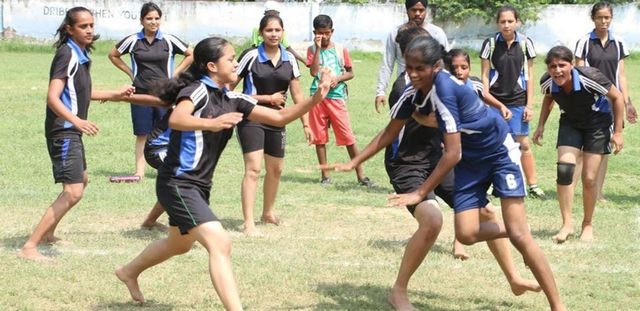
[ad_1]
National Sports Day is celebrated as an annual event on 29 August in India on the birthday anniversary of legendary hockey player Dhyan Chand. This day serves as a platform to recognise and honour professional athletes for their sporting contributions. In recent years, it is seen as an opportunity for stakeholders in India’s sports ecosystem to build on the historical nature of the day, launch programmes and initiatives for the development of sports and play culture.
There are two major initiatives to this end – in ‘Khelo India scheme’ and ‘Fit India Movement’ – that have formed a core part of India’s sports development and grassroots strategy. Such schemes and movements are important to the dominant discourse in sports today that the government, as a stakeholder, is pushing for.
The centralised nature of policy planning – part of the Khelo India scheme, Fit India Movement initiative – continues a ‘popular’ approach to a development paradigm in sports. These sports policy positions do not address questions of local geographical and spatial evolutions urban and rural areas have experienced. This means that the major systematic and socio-cultural gaps when it comes to pursuing sports or living a healthy lifestyle remain unquestioned and therefore unanswered.
These gaps comprise unequal availability and accessibility of sports facilities for a major section of society. Girls and women face challenges of security and safety in their relationship with open and organised playing spaces. Similarly, the organisation and scale of sports and play culture vary across geographies and communities based on their relationship with space and leisure.
This discourse around realising sports to ‘fitness’, ‘lifestyle’, ‘better health’ as part of the Fit India movement, for example, develops on the ‘physical’ nature of activities. It is the physical environment and its planning that needs to be given focus from a bottom-up perspective in order to contextualise challenges from a gendered perspective at a community-level. Similarly, the organisation of fitness weeks in schools and youth clubs as part of Fit India and National Sports Day is proposed and practised.
A study on the culture of children’s play discusses gender as an important socio-cultural determinant of play and how women are disadvantaged when it comes to accessing social infrastructure. Further, research exploring violence in slums especially towards young girls, noted, “Gyms have emerged as a new feature of the area. Several of these gyms which are frequented by males are in the vicinity of schools and give an opportunity for youth to harass girls passing by.” A WHO study in 2019 noted that Indian girls have the “lowest levels of insufficient activity” that can be “potentially explained by societal factors, such as increased domestic chores in the home.”
In discussing exercise habits and gender differences amongst school-going children, “gendered segregation of lifestyle issues is of central importance,” a 2016 study noted. It noted that girls were least engaged in “yoga, exercise, active leisure time use and awakening before sunrise, less consumption of milk, green salad but more of late-night sleep habits, using the internet, chatting on their cell phones and hurried eating style in comparison with male participants.” Similarly, the rural girls were least engaged in “sports such as playing cricket, traditional games like kabaddi and yoga and physical exercise as compared to their male counterparts.”
National goals [such as Fit India Movement] which discuss issues of diabetes and hypertension as important health risks should expand their scope to bring in gender as a socio-cultural determinant. This will certainly address an important bottleneck in lifestyle and fitness policies and pursuit of sports and play by women and girls in urban and rural areas.
It is by locating these gender gaps across fitness and physical culture in the context of India that these movements can address the diverse challenges. Further, emphasising on making social infrastructure more gender accessible and friendly will be significant – both from the urban governance point of view and sports development. On National Sports Day 2020, these factors are critical to understanding the multi-layered problem of women’s participation in play and fitness.
[ad_2]
Source link
